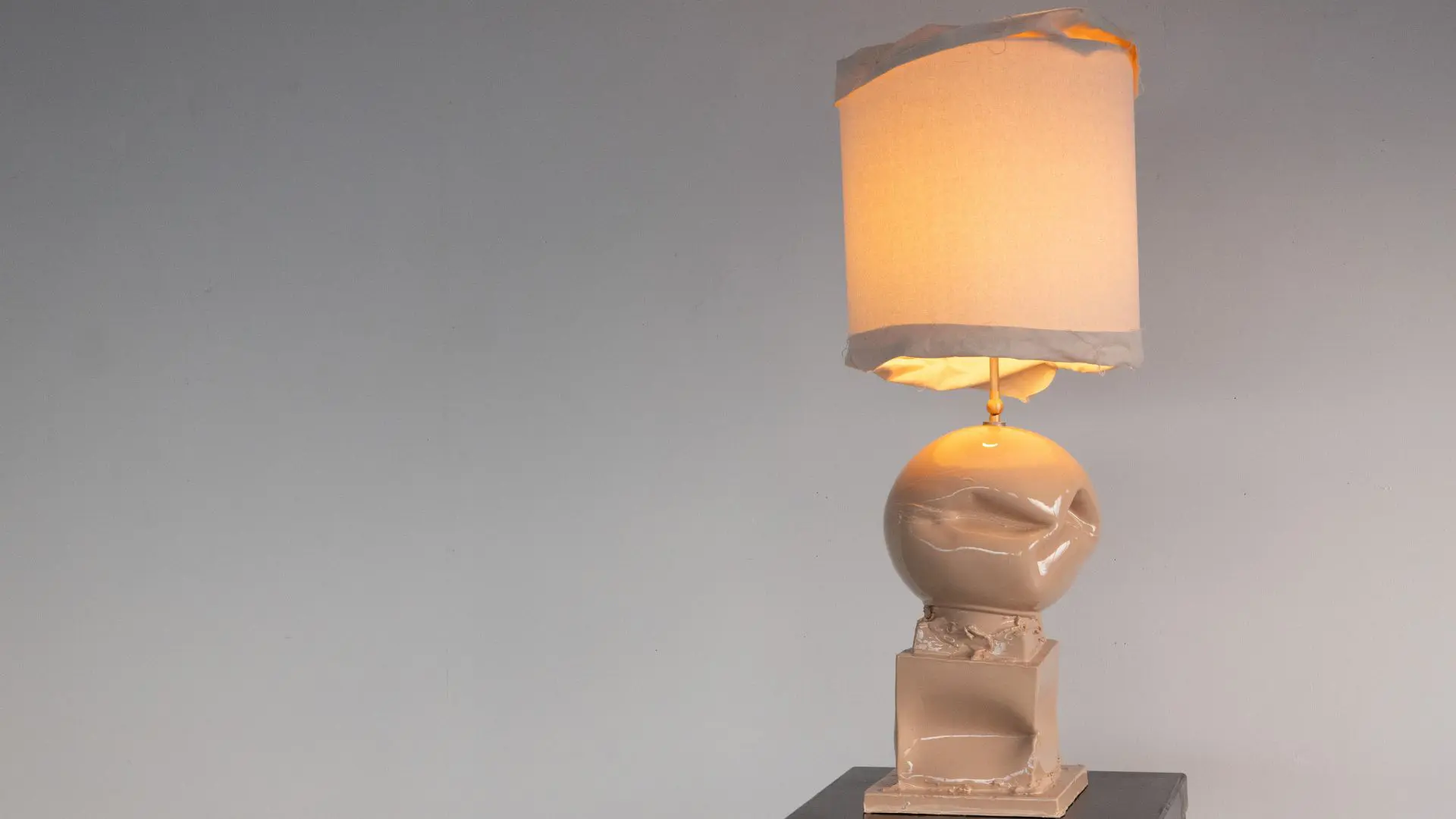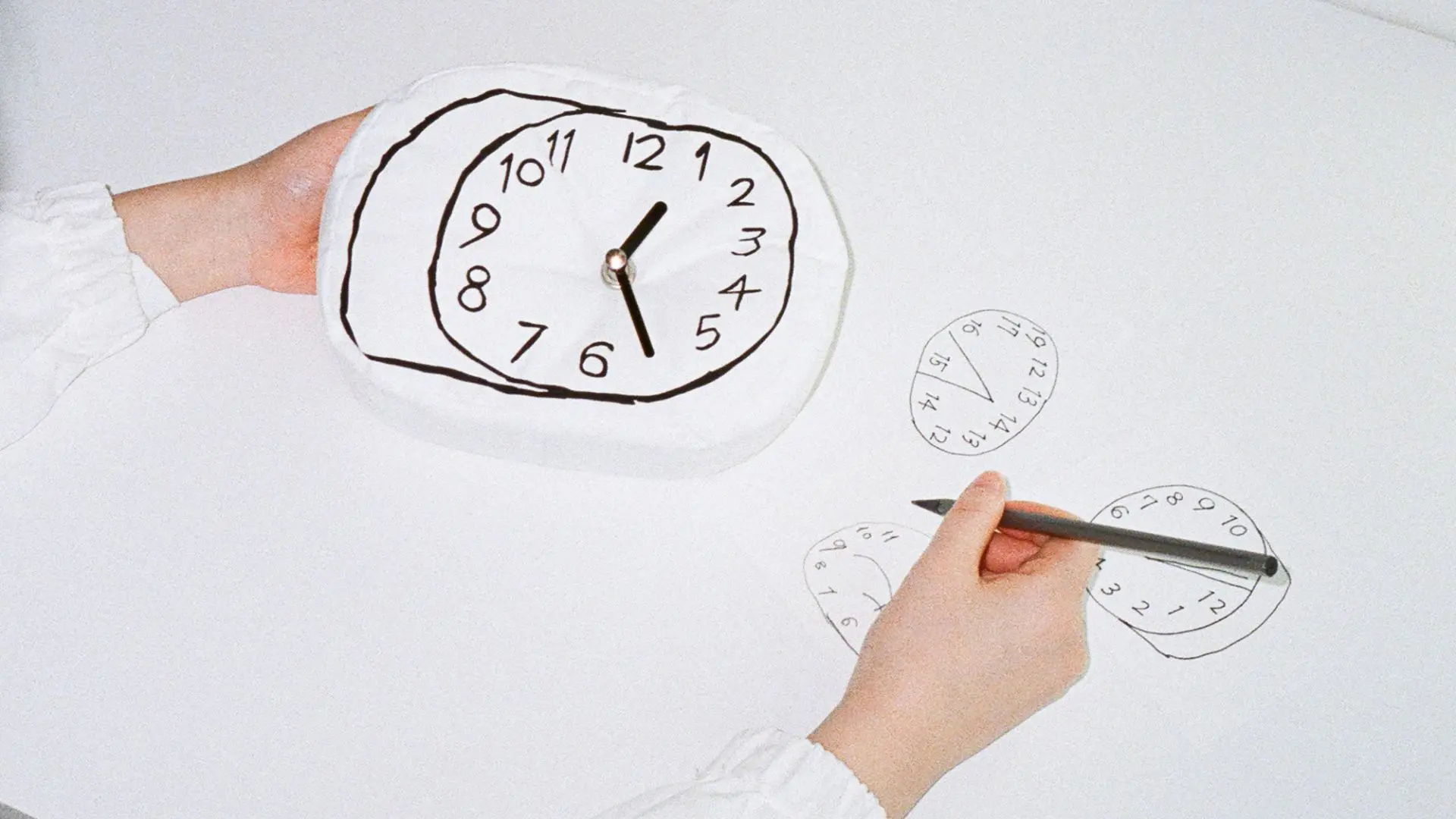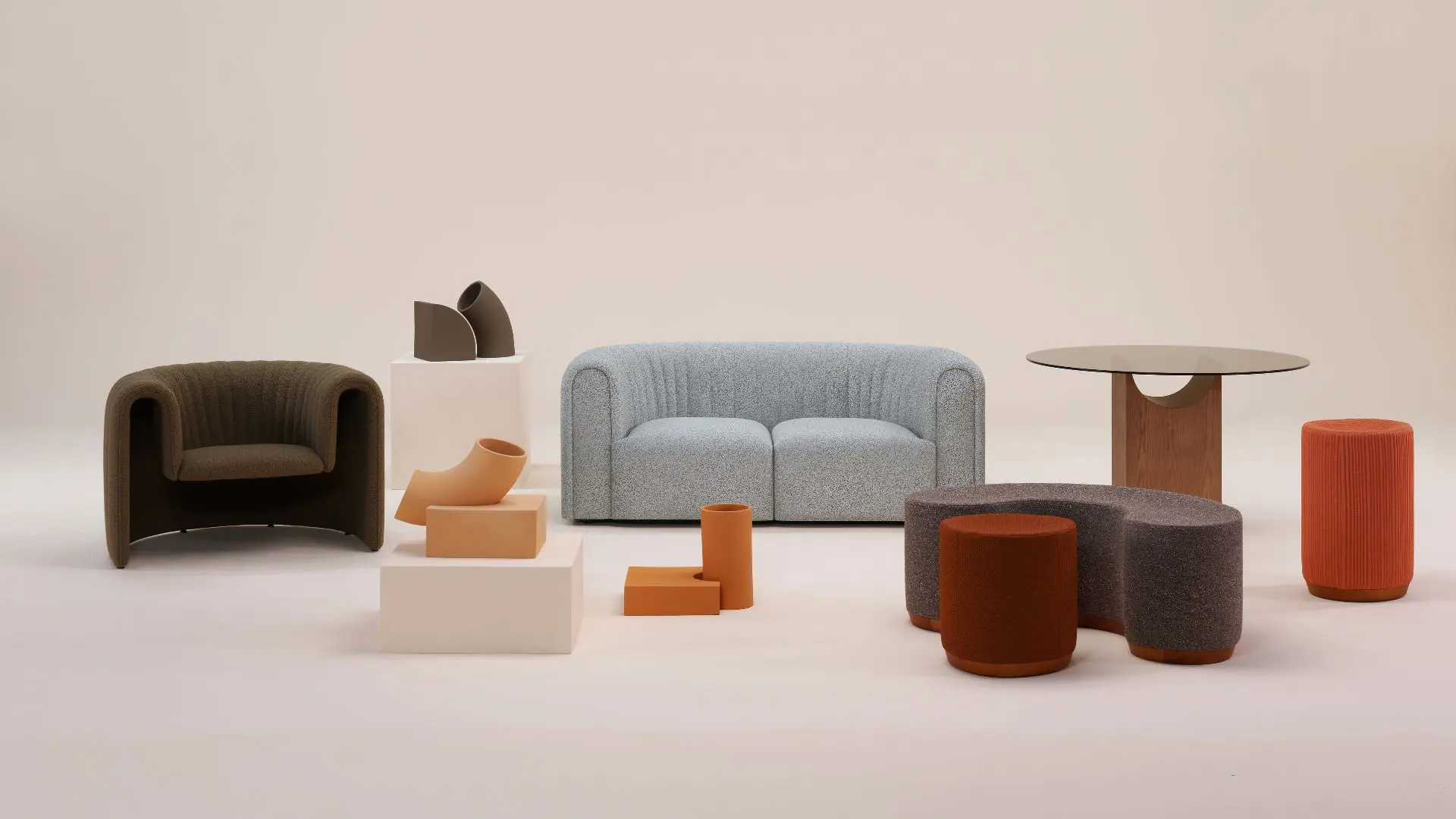Jenna Basso Pietrobon’s open thread
Jenna Basso Pietrobon’s imaginative ceramics concept Break the Mold is untameable. In its latest and most emotionally charged chapter, the multidisciplinary Canadian-Italian artist pays homage to the women in her life–the ones she grew up with and the ones she ceaselessly admires from afar.

Jenna Basso Pietrobon continuously creates systems of expression and then disrupts them on purpose. In this way, she feels free. Break the Mold is an assortment of captivating customizable and sustainably crafted ceramic vases and lamps in a constant state of evolution that, at its core, battles convention. The latest chapter of its story is the most nuanced one yet.
Entitled the Berta series, the new collection of lamps is a powerful tribute to Pietrobon’s grandmother Bertilla Zanin, and honors her resilience. The Merz series of sculptural pieces is inspired by the oeuvre and gusto of prolific Italian artist and sculptor Marisa Merz who coincidentally (or not) lived during the same time as Pietrobon’s grandmother.

In Break the Mold, each versatile interior piece has a unique presence. It doesn’t simply squeeze through and mold flexibly to its environment–it unapologetically takes up space instead. The power of the multidisciplinary Canadian-Italian artist’s creations lies in how they possess the ability to provoke you to poke at layers of yourself that ache for awakening or a mindful revisit.
Aesthetically, the multifaceted works of art redefine traditional ceramics by refreshingly thriving on imperfection. “The system I’ve created in Break the Mold involves using old molds and simple shapes like squares, rectangles, and spheres. Once I remove the clay from the molds, while it’s still pliable, I distort and collage these forms together. I embrace imperfections and want to highlight the raw material and the process of creation. Why should we make ceramics into flawless, smooth forms that resemble metal or plastic? Why hide the natural essence of the material?” says Pietrobon.

Born in the Italian town of Breganze, Bertilla Zanin came from humble beginnings. As an Italian immigrant who fled to Toronto, Canada in the 1950s, she faced prejudice and hardships that taught her the importance of fighting for a better life. Her granddaughter shares how “It wasn’t easy. When she and my grandfather first immigrated, they often didn’t have enough food on the table. But they used the knowledge of their hometown of Nove, Italy to mix ceramics and textiles and that eventually evolved into a successful lighting company that employed over 100 people. My grandmother made the lampshades, and my grandfather created the ceramic bases.”

The new Berta series of distinct ceramic pieces coupled with animated lampshades is a love letter to Zanin and a nod to Peitrobon’s roots as a painter. In each one, she uses the same canvas she does for her paintings. When incorporating textiles, she joins forces with Italian companies, often sourcing dead stock from closed factories. Currently, the artist is collaborating with an upholstery company in Veneto, working with their exquisite Venetian vintage fabrics to create limited-edition pieces that merge history, artistry, and sustainability.

If Pietrobon was granted a chance to be reunited with her grandmother now, she would tell her that she “saw her strength. She taught me how to be fierce, how to speak up when society expects silence, and how to refuse to sit down or be pushed aside. She didn’t teach me with words–she taught me by example. By surviving. By never giving up. She shaped us. Through her, I found the strength to create without compromise.”

A pivotal figure of the Arte Povera movement, Marisa Merz believed works of art need to be alive, breathing, reactive–and not frozen or framed. They should have the space and freedom to grow and change. Merz famously never finished her sculptures. They were always in progress as she would re-work and rename them at her studio. A resistance to linearity, many of her pieces are undated. The world Merz pieced together throughout her lifetime is one in a perpetual state of unraveling–ever-present for us to decipher and connect with.

What Pietrobon most admires in Merz’s sculptures is how she transformed industrial materials into organic and alive shapes reminiscent of mystifying creatures that perform within the space they inhabit yet seamlessly blend with it as well. “Her sculptures, like her life, are soft yet radical, intimate yet strong. They convey how softness can be a form of resistance, and how you can rebel without shouting or demanding attention. There’s a quiet strength in that, and it’s something I strive to embody in my own work. That sense of refusing finality speaks to how I view my own practice: not as a series of endpoints, but as an ongoing dialogue between materials, ideas, and lived experience,” says Pietrobon.

The sculptural ceramic pieces that make up the Merz series pull you in with their fluid shapes, mimicking natural forms such as waves and cocoons and just as fervently forces of disruption. With dynamic tension housed and alive in each one, the objects have an ethereal, almost otherworldly quality to them with the passage of time and the interplay between light and shadow identified as the nucleus narratives being ever-illustrated.

Fundamentally, Break the Mold centers around the courageous act of building through intuition–fusing multiple forms from contrasting molds and then carefully layering them together, creating an intricate structure that conveys the strength of the material as much as it does the poetic harmony between the separate elements. Pietrobon reflects how her “years spent in architecture, working alongside engineers and architects in New York also played a huge role in shaping my approach. I have carried those lessons into my own work, ensuring that my creations have the structural integrity to support their emotional and philosophical complexity.”

For the Paris-based artist, sustainability is about honoring what already exists and “finding ways to elevate what’s been forgotten or cast aside.” She repurposes materials whenever possible and sources discontinued fabrics from a closed-down upholstery company near Venice “which still holds bolts of beautiful, unused textiles. These materials carry history. Giving them new form, new light–both literally and figuratively–is part of what makes each piece special.”
Many of the pieces of the Break the Mold collection are made in custom color palettes as well: “We’ve created custom colorways for Artemest, among others–collaborations that honor both the client’s vision and the project’s ethos of individuality and craft. This approach ensures that each object is not only one-of-a-kind in form but in intention and resonance as well.”
Now more than ever before, we need to experience the world around us through someone else’s eyes to exercise our sense of empathy and allow ourselves to dance with our inner turbulence. From the very inception of Break the Mold, Pietrobon felt the pulsing heartbeat of an artistic open thread that was potent enough to guide, run through, and empower everything she created. She chose to follow it, become one with it, and remain open to it. Its roots firmly established, wherever it leads next–transmuting into a sort of infinity persona all its own–will embody a spell Pietrobon wouldn’t dare break.














